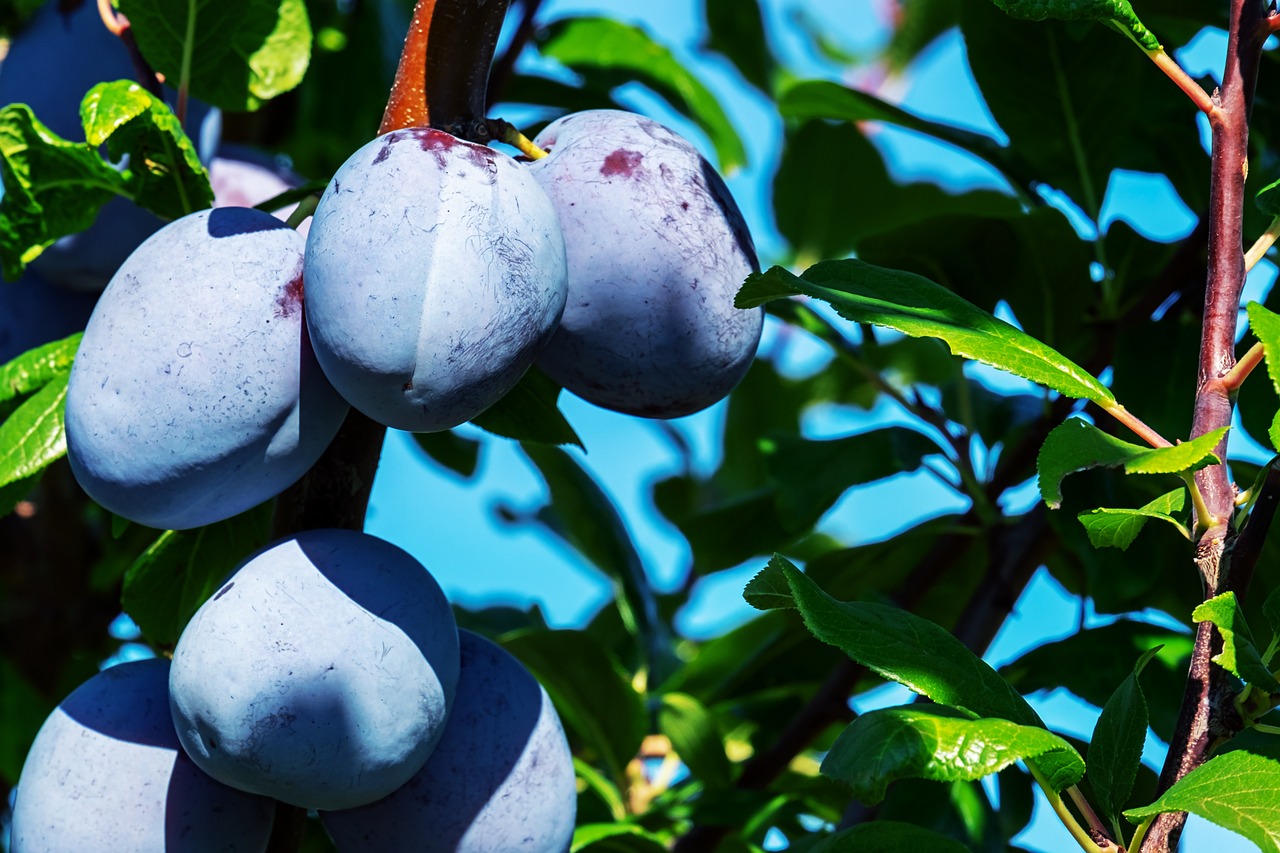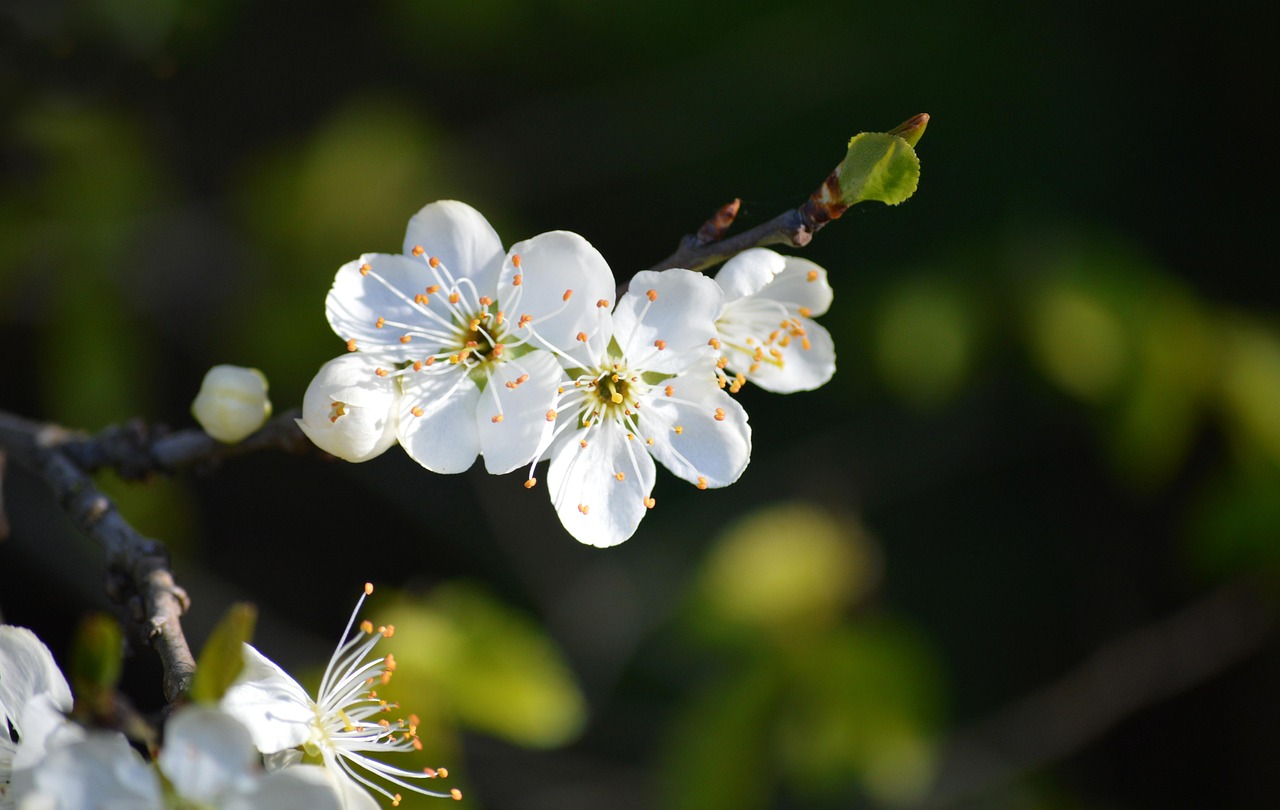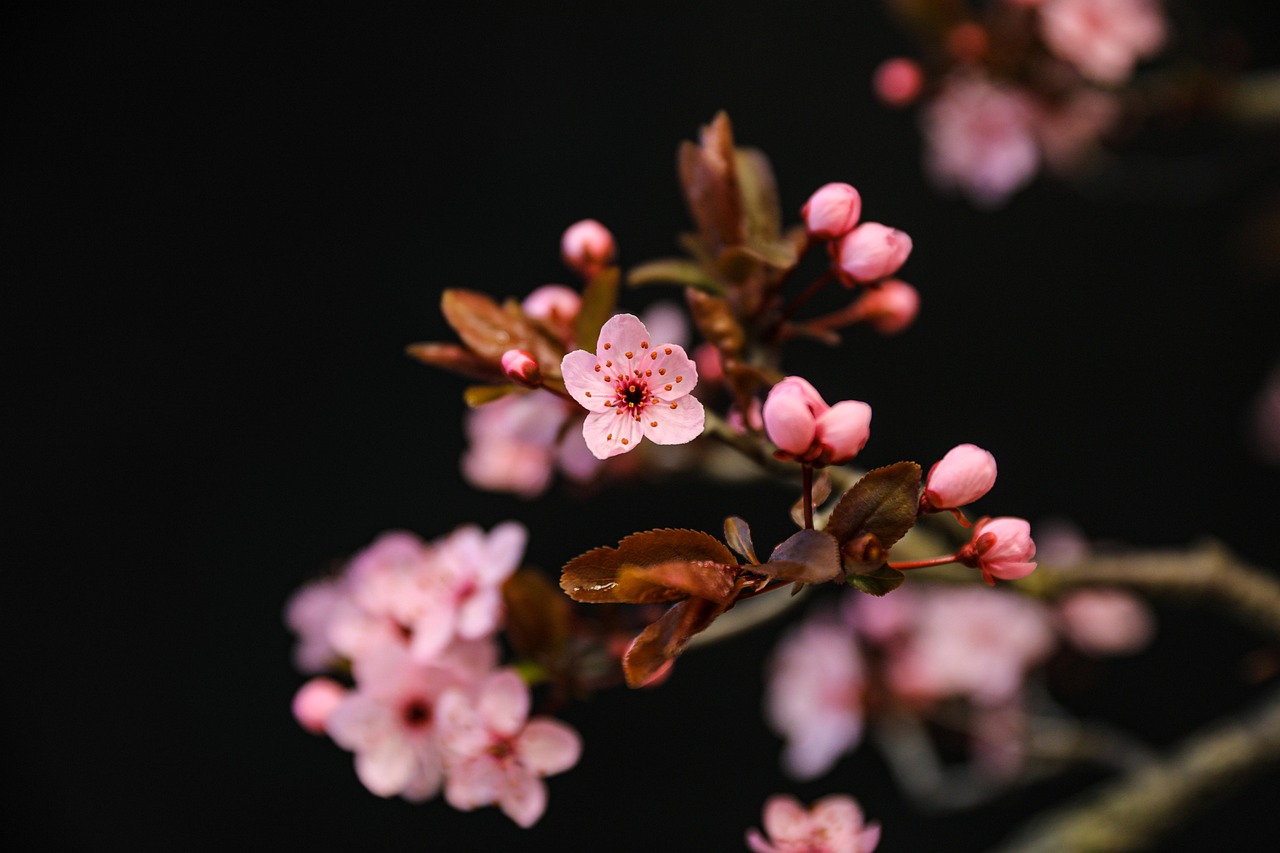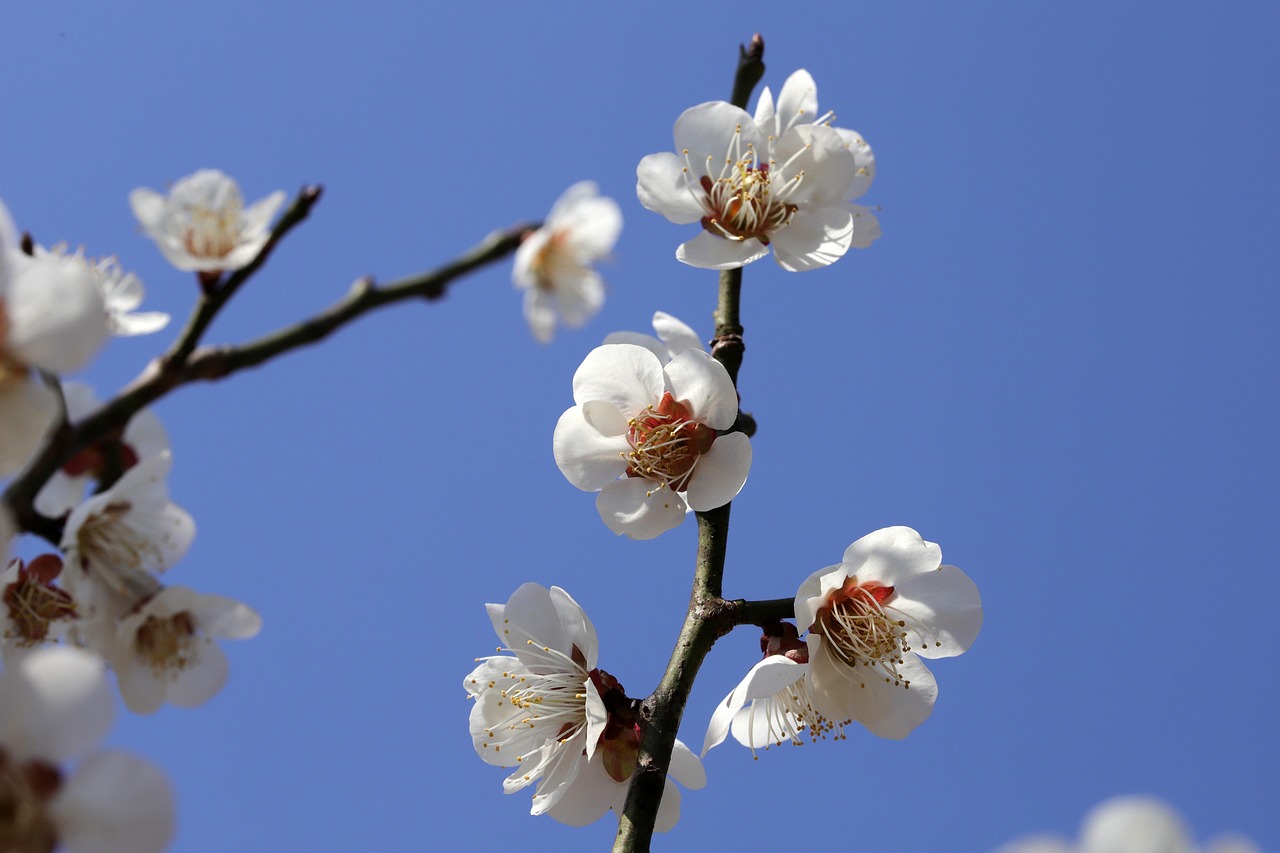The Thundercloud Plum Tree has a moderate growth rate, typically reaching a height of 15 to 25 feet within 5 to 10 years. It produces beautiful spring blossoms, usually blooming in early April, depending on the climate and specific growing conditions.
The Thundercloud Plum Tree is a popular ornamental fruit tree known for its stunning spring blossoms and attractive foliage. This tree is particularly valued for its vibrant pink flowers that appear in early spring, creating a picturesque landscape. Gardeners and homeowners often choose this tree not only for its aesthetic appeal but also for its ability to produce edible plums.

Understanding the growth rate of the Thundercloud Plum Tree is essential for proper care and maintenance. The growth rate can be influenced by several factors, including soil quality, water availability, sunlight exposure, and climate conditions. This tree thrives in well-drained soil with a pH level between 6.0 and 7.5. When planted in optimal conditions, it can flourish and provide beautiful blossoms as well as delicious fruit.
Factors Affecting Growth Rate
Several key factors influence the growth rate of the Thundercloud Plum Tree. By understanding these factors, gardeners can better support their trees and encourage healthy growth.
- Soil Quality: Well-drained soil enriched with organic matter promotes faster growth.
- Watering: Consistent watering, especially during dry spells, is crucial for optimal growth.
- Sunlight: Full sun exposure (at least 6 hours a day) supports vigorous growth and flowering.
- Climate: Thundercloud Plum Trees do best in temperate climates with mild winters and warm summers.
In addition to these environmental factors, the age of the tree at planting can also impact its growth rate. Younger trees tend to establish faster than older ones due to their adaptability and resilience during the initial planting phase.

Growth Stages of Thundercloud Plum Trees
The growth stages of Thundercloud Plum Trees can be categorized into several phases. Each stage has specific characteristics that define the tree’s development.
| Growth Stage | Duration | Characteristics |
|---|---|---|
| Seedling Stage | 0-1 Year | Initial root establishment and small leaf development. |
| Juvenile Stage | 1-3 Years | Rapid height growth with increased branching. |
| Mature Stage | 3-10 Years | Full height reached; first blossoms appear in spring. |
| Reproductive Stage | 10+ Years | Regular flowering and fruit production. |
The seedling stage is critical as it sets the foundation for future growth. During this period, ensuring that the roots are well-established will help the tree thrive as it progresses to the juvenile stage. As the tree enters the juvenile stage, you can expect noticeable height increases and a more robust structure. By the time it reaches maturity, the Thundercloud Plum Tree will begin to produce its beautiful spring blossoms, signaling its readiness to enter the reproductive stage.
Caring for your Thundercloud Plum Tree throughout these stages not only enhances its growth rate but also increases its lifespan and productivity. Regular pruning can help shape the tree and encourage more blossoms, while timely fertilization supports nutrient availability.

As spring approaches, observing your Thundercloud Plum Tree becomes increasingly exciting. The anticipation of vibrant blooms is a reminder of nature’s beauty and the rewarding experience of nurturing a living organism. Understanding its growth rate and requirements can ensure that your tree remains healthy and productive for many years to come.
Optimal Growing Conditions for Thundercloud Plum Trees
To ensure healthy growth and vibrant blossoms, it is essential to provide optimal growing conditions for Thundercloud Plum Trees. These trees thrive in environments that mimic their native habitats. Proper attention to the following factors can significantly influence their growth rate and flowering capabilities.
Soil Requirements
Soil quality plays a pivotal role in the health of Thundercloud Plum Trees. The ideal soil should possess the following characteristics:
- Well-Drained: Avoid waterlogged conditions to prevent root rot.
- Rich in Organic Matter: Incorporating compost can enhance nutrient availability.
- pH Level: A slightly acidic to neutral pH (6.0 to 7.5) is optimal.
Before planting, conducting a soil test can help determine its composition and pH level. If necessary, amendments such as lime or sulfur can adjust the pH to create a suitable environment for the tree.

Watering Practices
Proper watering is essential during the early stages of growth as well as during dry spells. Here are some guidelines for effective watering:
- Water deeply but infrequently to encourage deep root development.
- Avoid overhead watering; instead, use soaker hoses or drip irrigation to minimize disease risks.
- Monitor soil moisture levels regularly, especially during hot weather.
During the first year after planting, ensure that the tree receives adequate moisture, especially if rainfall is insufficient. Mature trees may require less frequent watering but should still be monitored for signs of drought stress.
Pest and Disease Management
Like all plants, Thundercloud Plum Trees are susceptible to various pests and diseases. Early detection and management are crucial to maintaining tree health. Below are common issues to watch for:
- Pests:
- Plum Curculio: This beetle can damage fruit buds and developing fruits.
- Aphids: These small insects can weaken trees by sucking sap.
- Spider Mites: Watch for webbing on leaves, indicating stress.
- Diseases:
- Cytospora Canker: A fungal disease that causes dieback in branches.
- Brown Rot: Affects blossoms and fruit, leading to decay.
- Leaf Spot: Fungal infections that create brown spots on leaves.
Regular monitoring and maintaining good garden hygiene can help prevent many of these issues. Pruning dead or diseased branches and ensuring proper air circulation will also reduce the risk of disease.
Nutrient Requirements
Nutrient availability significantly affects the growth rate and overall health of Thundercloud Plum Trees. A balanced fertilization program can provide the necessary nutrients for optimal growth.
The following nutrients are particularly important:
- Nitrogen: Supports vegetative growth and overall vigor.
- Phosphorus: Essential for root development and flowering.
- Potassium: Enhances fruit quality and disease resistance.
A soil test will help determine the specific nutrient needs of your tree. Generally, a balanced fertilizer with an NPK ratio of 10-10-10 or similar can be applied in early spring before new growth begins. Applying organic fertilizers, such as compost or well-rotted manure, can also provide a slow release of nutrients throughout the growing season.
Pruning Techniques for Optimal Growth
Pruning is an important practice that shapes the growth of Thundercloud Plum Trees while promoting healthier blossoms and fruit production. Proper techniques can significantly enhance growth rates.
- Timing: The best time to prune is late winter or early spring before new growth begins.
- Tools: Use clean, sharp tools to make precise cuts that heal quickly.
- Techniques:
- Thinning: Remove crowded branches to improve air circulation.
- Crown Maintenance: Shape the crown to allow sunlight penetration.
- Deadwood Removal: Cut away any dead or diseased branches promptly.
Regular pruning not only maintains the shape of the tree but also encourages more blossoms each spring, enhancing the visual appeal of your landscape.
By focusing on these optimal growing conditions, gardeners can foster robust Thundercloud Plum Trees that yield beautiful blossoms and delicious plums for years to come.
Spring Blossom Phenomenon of Thundercloud Plum Trees
The Thundercloud Plum Tree is renowned for its spectacular spring blossoms, which are a significant attractant for both gardeners and pollinators. Understanding the blooming process, including the factors that influence its timing and abundance, can enhance the overall gardening experience.
Bloom Timing and Duration
The blooming period for Thundercloud Plum Trees typically occurs in early spring, often around April. However, the exact timing can vary based on local climate conditions and specific cultivar characteristics. Here are some key points regarding bloom timing:
- Temperature Influence: Warmer temperatures in early spring can accelerate blooming. Conversely, late frosts may damage early buds.
- Sunlight Exposure: Trees that receive full sun are more likely to produce abundant blossoms compared to those in shaded areas.
- Aging of the Tree: Younger trees may take a few years to produce their first significant bloom, while mature trees will consistently produce flowers each spring.
The duration of the bloom typically lasts about two weeks, depending on weather conditions. Rain and wind can cause blossoms to drop prematurely, impacting the visual display.
Flower Characteristics
The flowers of the Thundercloud Plum Tree are not only visually captivating but also play a critical role in attracting pollinators. Some notable characteristics include:
- Color: The flowers are a delicate shade of pink, which contrasts beautifully against the dark purple foliage.
- Size: Each blossom measures about 1 to 2 inches in diameter, featuring five petals.
- Aroma: The blossoms emit a pleasant fragrance that attracts bees and other pollinators, contributing to cross-pollination.
This combination of visual appeal and fragrance makes Thundercloud Plum Trees a popular choice for ornamental landscaping.
The Role of Pollination
Pollination is crucial for the successful fruiting of Thundercloud Plum Trees. While these trees can self-pollinate, cross-pollination from another plum variety often results in more abundant fruit production. Understanding the role of pollination can help gardeners make informed choices about planting.
Types of Pollinators
Several types of pollinators visit Thundercloud Plum Tree blossoms, enhancing fruit set. Some common pollinators include:
- Honeybees: These are the primary pollinators, known for their efficiency in transferring pollen between flowers.
- Bumblebees: They are larger than honeybees and can pollinate in cooler temperatures.
- Butterflies: While they primarily feed on nectar, butterflies also contribute to pollination.
Encouraging these pollinators can significantly enhance the tree’s productivity. Planting a variety of flowering plants nearby can create a more inviting environment for them.
Caring for Blossoms During Spring
As spring approaches and blossoms begin to form, specific care practices can help maximize the blooming potential and protect the flowers from adverse conditions.
Frost Protection
Late spring frosts can threaten blooming flowers. Implementing frost protection measures can help preserve blossoms during unexpected temperature drops. Consider the following strategies:
- Covers: Use frost cloths or blankets to cover trees during predicted frost nights.
- Watering: Watering the soil around the tree before a frost can help retain heat in the ground.
- Windbreaks: Planting shrubs or using temporary barriers can help protect against cold winds.
Nutrient Management During Blooming
Providing adequate nutrients during the blooming season helps support healthy flower development. Apply a balanced fertilizer in early spring to enhance nutrient availability during this critical phase. Look for fertilizers with an NPK ratio rich in phosphorus, as it is essential for flower production.
Common Issues During Blooming
Despite careful management, Thundercloud Plum Trees may face certain challenges during their blooming period. Being aware of potential issues allows gardeners to act quickly and effectively.
- Pest Infestation: Watch for pests such as aphids or caterpillars that may feed on blossoms. Use organic insecticidal soap if necessary to control populations.
- Disease Risks: Fungal diseases like brown rot can affect blossoms. Ensure proper air circulation through pruning and avoid overhead watering during bloom time.
- Nutrient Deficiency: Yellowing leaves or stunted blooms may indicate nutrient deficiencies. Conduct soil tests to determine specific needs.
By remaining vigilant and proactive, gardeners can enjoy a splendid display of blossoms every spring while ensuring their Thundercloud Plum Trees remain healthy and productive throughout their growing seasons.
Maintenance and Long-Term Care of Thundercloud Plum Trees
Maintaining a Thundercloud Plum Tree involves regular care practices that extend beyond the blooming season. These practices will help ensure the tree remains healthy and productive for many years. Some essential maintenance tasks include:
Annual Pruning
As previously mentioned, pruning is vital for shaping the tree and promoting healthy growth. Annual pruning allows for:
- Improved Air Circulation: Removing crowded branches helps prevent diseases.
- Enhanced Light Penetration: Properly spaced branches allow sunlight to reach all parts of the tree.
- Increased Blossom Production: Regular pruning encourages new growth, leading to more flowers.
During pruning, it is crucial to assess the overall shape and health of the tree, removing any dead or diseased wood promptly.
Fertilization Schedule
A regular fertilization schedule is essential for optimal growth and fruit production. In addition to the early spring application, consider the following:
- Mid-Summer Fertilization: A second application of balanced fertilizer in mid-summer can support ongoing growth and fruit development.
- Organic Amendments: Adding compost or well-rotted manure each fall helps build soil health and nutrient availability.
Watering Consistency
Consistent watering throughout the growing season is crucial, especially during dry spells. Keeping an eye on soil moisture levels will help ensure that your Thundercloud Plum Tree receives adequate hydration.
- Mulching: Applying mulch around the base of the tree can help retain moisture and regulate soil temperature.
- Drip Irrigation: Consider installing a drip irrigation system to provide consistent moisture without over-saturating the soil.
Common Problems and Solutions
Even with diligent care, Thundercloud Plum Trees may encounter various issues. Here are some common problems and effective solutions:
Pest Control Strategies
Pests can adversely affect both the health of the tree and its blossoms. Employing integrated pest management strategies can keep these pests at bay:
- Regular Monitoring: Keep an eye out for any signs of infestation and act quickly.
- Biological Controls: Introduce beneficial insects such as ladybugs to manage aphid populations naturally.
- Organic Pesticides: If pest populations become unmanageable, consider using organic pesticides as a last resort.
Disease Prevention
Preventing fungal diseases is crucial for maintaining healthy blossoms. Implement the following practices to minimize disease risks:
- Avoid Overhead Watering: Watering at the base of the tree prevents water from sitting on leaves.
- Maintain Hygiene: Clear away fallen leaves and debris from around the base of the tree to discourage fungal growth.
- Fungicides: In cases where diseases are prevalent, applying fungicides early in the season can help protect blossoms.
Conclusion
The Thundercloud Plum Tree is a beautiful addition to any landscape, offering stunning spring blossoms and delicious fruit. Understanding its growth rate, optimal conditions, and care requirements can lead to thriving trees that enhance your garden’s aesthetic appeal. By focusing on proper soil management, watering, pest control, and pruning techniques, gardeners can ensure their Thundercloud Plum Trees flourish year after year.
With vigilant care and attention to detail, these trees are not only capable of producing abundant blossoms but also enriching your outdoor space with their vibrant colors and delicious plums. Whether you are a seasoned gardener or a beginner, nurturing a Thundercloud Plum Tree can be a rewarding experience that brings beauty and fruitfulness to your garden.
Ultimately, investing time and effort into understanding the needs of your Thundercloud Plum Tree will yield beautiful results, creating a landscape that celebrates nature’s beauty every spring.
